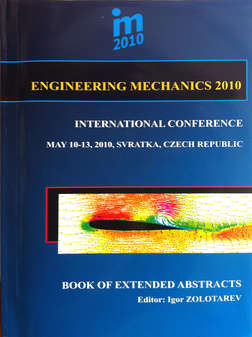Proceedings Vol. 16 (2010)

ENGINEERING MECHANICS 2010
May 10 – 13, 2010, Svratka, Czech Republic
Copyright © 2010 Institute of Thermomechanics, Academy of Sciences of the Czech Republic, v.v.i., Prague
ISSN 1805-8248 (printed)
ISSN 1805-8256 (electronic)
list of papers scientific commitee
pages 109 - +9p., full text
The article compares different boundary conditions for models of abdominal aortic aneurysms in order to find a suitable boundary condition which would allow removing the bifurcation from the models. Removal of the bifurcation simplifies the geometry reconstruction and FEA. The best way to do so is by cutting it out by a plane which is not perpendicular to the longitudinal axis of the body. Introduction Abdominal aortic aneurysm (AAA) is defined as a permanent dilatation of the abdominal aorta. Its prevalence varies from 3% up to 7% at people above 65 years (Sonesson et al., 1999. Nichols et al.,1998). When left untreated it can lead to a fatal end-rupture. When rupture occurs, a massive internal bleeding will follow. Overall mortality in such cases is about 50%. Therefore it is vital to predict the risk of rupture in order to plan a surgery. So far the diameter of the AAA is a widely accepted criterion for such a decision but the wall stress is a better predictor of rupture (Fillinger et. al., 2002). Recently clinical software has appeared which uses FEA of the AAA to estimate its wall stress in order to predict the rupture risk. Despite a great progress in FEA of AAAs there are still some limitations of its use. First of all, it is necessary to obtain a realistic patient-specific geometry of the AAA. It has been shown that idealized models of AAAs are not able to describe the wall stress distribution realistically (Vorp, 2007
back to list of papers
Text and facts may be copied and used freely, but credit should be given to these Proceedings.
All papers were reviewed by members of the scientific committee.

 Powered by
Imce 3.20 © 2023, Pavel Formánek, Institute of Thermomechanics AS CR, v.v.i. [generated: 0.0292s]
Powered by
Imce 3.20 © 2023, Pavel Formánek, Institute of Thermomechanics AS CR, v.v.i. [generated: 0.0292s]